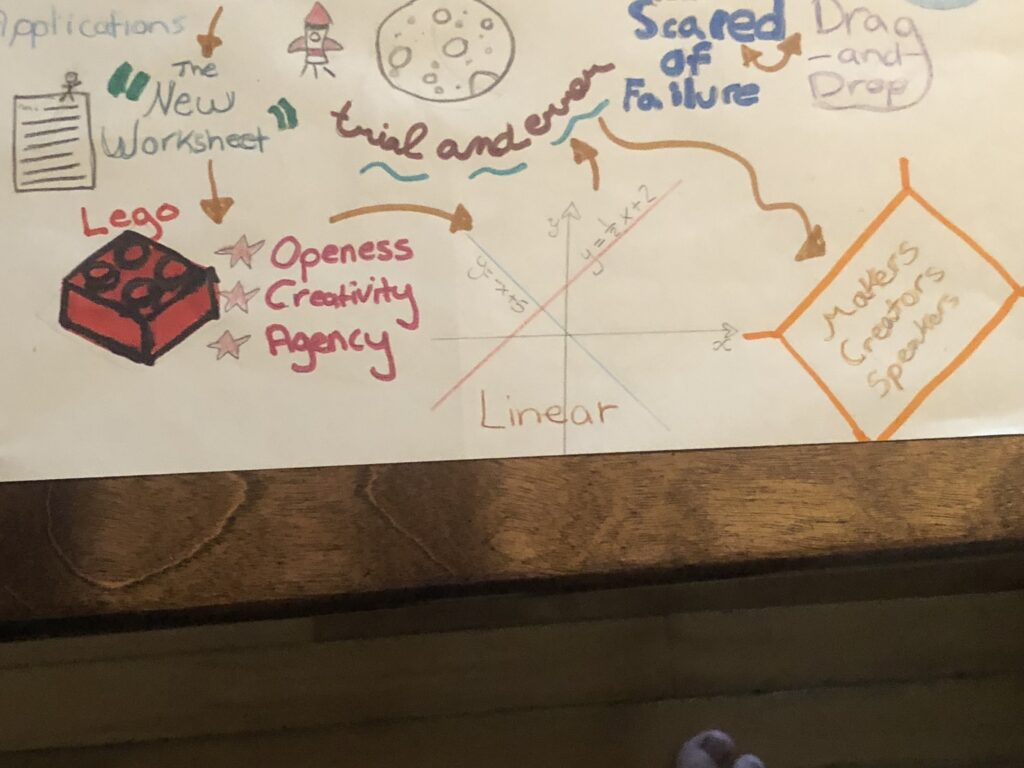I decided to do my assignment on Ashley Hinck’s “Digital Ghosts in the Classroom” article. This article focuses on the lack of creativity coming from students when it comes to Digital Pedagogy due to how they are taught in the school system. It talks about the fact that students are so afraid of failure, that they will not try something new or more challenging. For this assignment I decided to do a sketch note. I wanted to challenge myself. I usually stay away from anything pertaining to art, but I wanted to try something new.

The first topic I decided to add was the fear of failing and the process of just dragging and dropping. The Article explains how students always think to do the assignment that will be less creative, but will give the teacher what they want. Students are taught throughout their education that doing simple drag and drop tasks will get you the top marks. I put the logos of Facebook and Canva. Ashley Hinck goes into detail about how Canva and Facebook work together to bring the users a easy drag and drop experience. This makes people put aside their creative side and take part in a simple user experience that these platforms provide.

The next topics I visited were the amount of potential from no limit applications, the idea of “The New Worksheet” as Hinck calls it, and the importance of trial and error. The idea that people have so much potential when they use more complex applications, instead of drag and drop apps that they usually use. “The New Worksheet” idea looks at how the basic digital projects that students know well, is like giving out an old fashion worksheet. Like a worksheet, there is no creativity in a linear digital project. I put trial and error because the article expresses the important process of trying, failing and getting it just right. Without trial and error are world would be a lot different.

The last topics I tackled on my sketch note was the example of the lego, the linear thinking of digital projects in education, and the idea that we are all makers, creators, and speakers. The article uses the example of a lego to explain what kind of digital projects we should be doing in the classroom. Building legos with no instructions allows us to be open, creative and have agency. The article says these things should be in all digital projects throughout our schooling. The author feels that digital projects in traditional school culture only provide a linear approach to thinking, instead of being open, creative, and having agency. The article also tells that teachers should be giving students the tools to be makers, creators, and speakers. Instead of linear projects, there should be more complex projects that allow students to reach their potential.

Creating a sketch note allowed me to put the information from this article into action. I went out of my comfort zone and tried something I was not comfortable with. It allowed me to try some trial and error creating this artifact. It did not turn out exactly how I wanted it, but I will keep trying to perfect it throughout time.
This article provided me with a lot of information that I will take with me into my classroom. I will add some creative digital projects that will allow my students to use their creativity. I will try to give my students the tools they need to become makers, creators, and speakers. I will also continue to increase my Digital Pedagogy.
